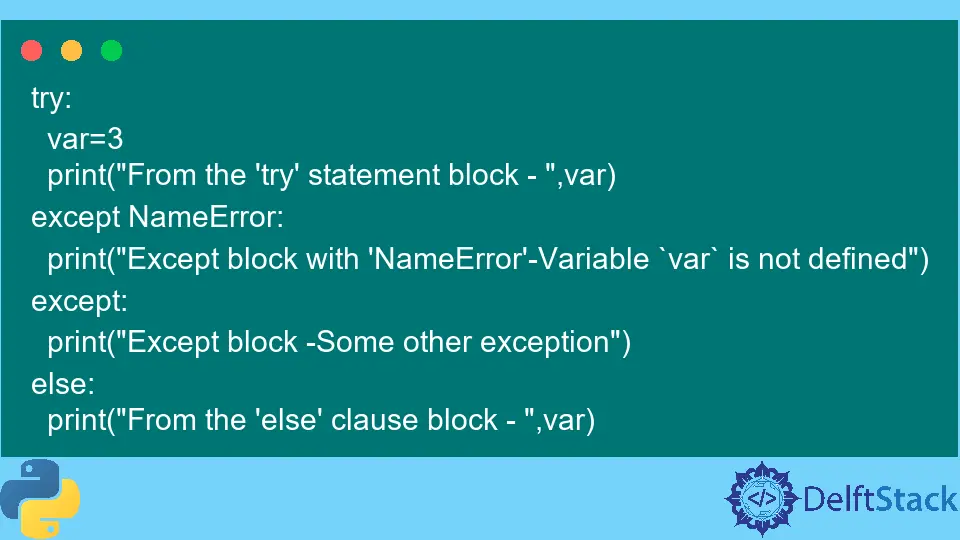在 Python 中使用 try...else 块
Najwa Riyaz
2023年10月12日

本文解释了如何使用 else 和 try...except 对。我们已经包含了一些你用作指南的方法,以将这对组合到一个程序中。
try:
<a code block >
except:
<a code block >
else:
<a code block. Note: 'else' clause is optional>
except 子句用于指定 >=1 异常处理程序。如果在 try 块中抛出异常,则执行与此子句关联的代码块,从而处理错误。
else 子句是可选的。它位于所有 except 子句之后。只有在 try 块中没有抛出异常时,才会执行与此子句关联的代码块。
让我们尝试使用和不使用 else 语句的示例。
在 Python 中使用没有 else 子句的 try...except 块
这是一个示例代码,演示如何使用 try...except 而没有 else 子句。
try:
print("From the 'try' statement block - ", var1)
except:
print("Except block - An exception occurred")
此处,在 try 块中未定义 var1,会发生以下情况。
- 在
try块中发生异常。 - 不打印
try块中的print语句。 - 执行
except代码块。
输出:
Except block - An exception occurred
在 Python 中使用 try...except 块和 else 子句
此处,示例代码显示了如何将 try...except 与 else 子句一起使用。
try:
var = 3
print("From the 'try' statement block - ", var)
except NameError:
print("Except block with 'NameError'-Variable `var` is not defined")
except:
print("Except block -Some other exception")
else:
print("From the 'else' clause block - ", var)
这里,在 try 块中定义了 var,因此会发生以下情况。
- 在
try块中没有发生异常。 - 打印出现在
try块中的print语句。 except代码块不执行。else代码块被执行。- 打印出现在
else块中的print语句。
输出:
From the 'try' statement block - 3
From the 'else' clause block - 3